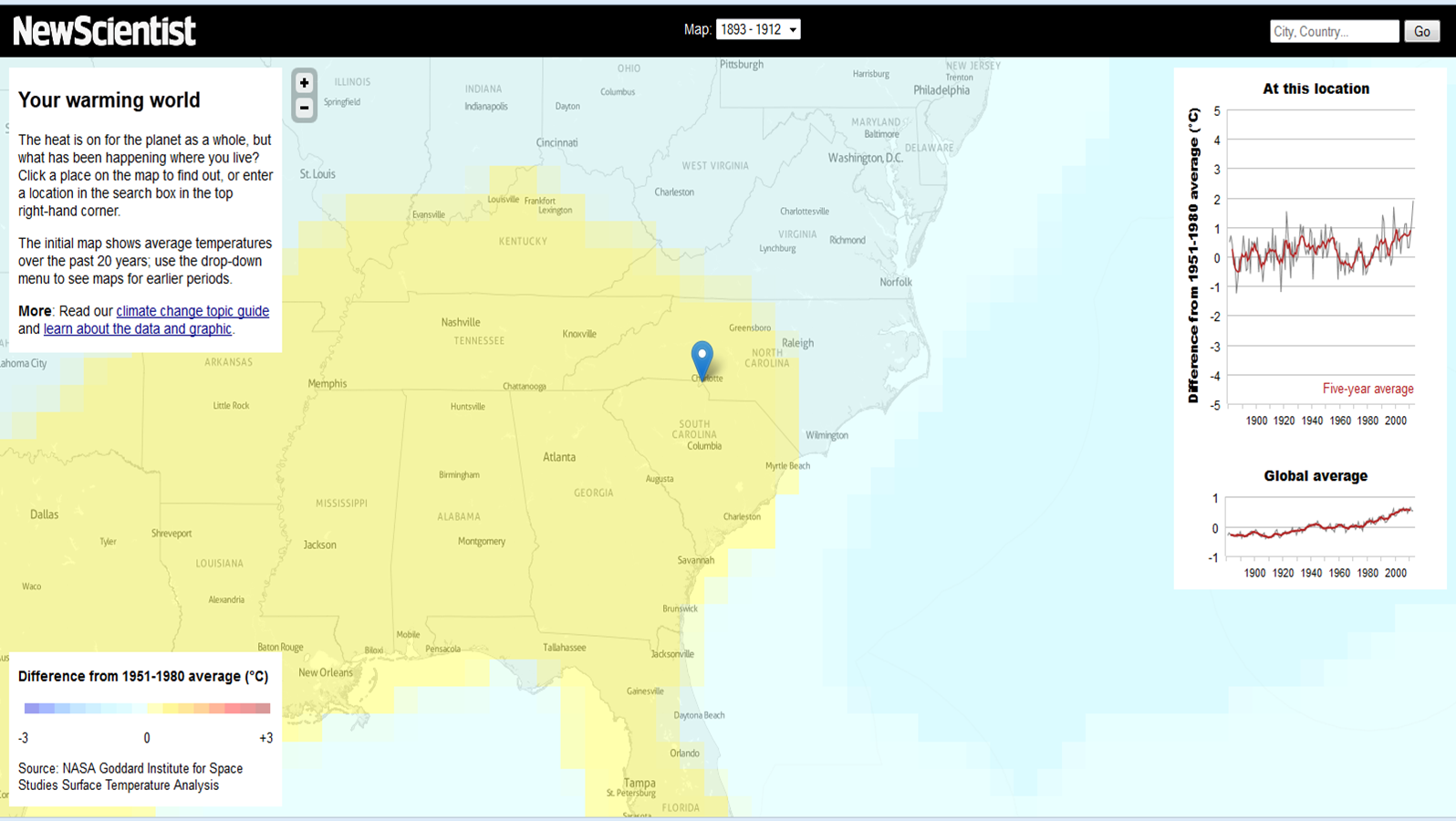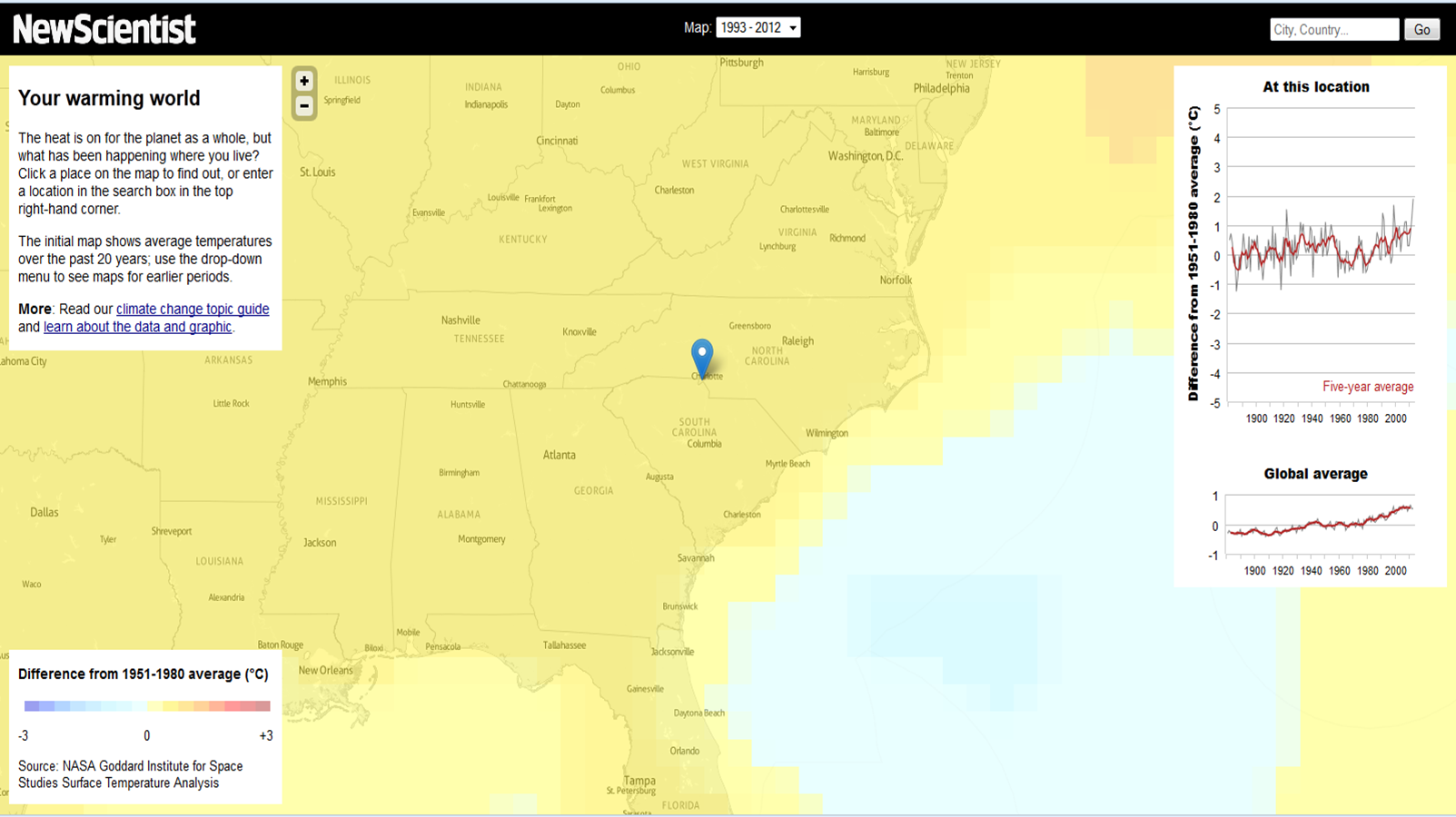I watched the soon-to-be-officially-released new film about climate science and climate scientists called Thin Ice today. I read about Thin Ice on the RealClimate blog, where the blog author (an Atmospheric Scientist who is interviewed in the film itself) posted that screenings of Thin Ice were being planned for Earth Day 2013 (22 April). Great idea! The film makers say
Join us on Earth Day, April 22nd, 2013 for the global launch of Thin Ice: The inside story of climate science. The film will be available for free online here or can be seen in person at various screenings around the world from April 22nd-23rd.
Since I teach a course about global warming in the Spring and Fall semester here at UNC Charlotte, I immediately thought that this would be a valuable multimedia way to incorporate more than just me talking about the world of climate science with my 12 students. Turns out the documentary-style film is really accessible. A geologist named Simon Lamb starts the movie by talking about his motivation – kind of like you would if you were writing a scientific paper intended for publication. Namely, Lamb poses the hypothesis that climate scientists are “peddling a lie” – a hypothesis that any person in the world could arrive at fairly easily given the way that climate science is discussed outside the scientific world at times. Lamb tests his hypothesis by talking with climate scientists and learning about what they do and, more importantly in my opinion, WHY. The answer to why isn’t stated explicitly, but I think it is the common thread linking the scientists working on understanding the amazing climate system. Certainly, the movie and the conclusions resonate with me. The Earth is an amazing place, and humans working for the greater good truly raise the collective level of optimism about the future.
If you want to sit in on the UNC Charlotte screening, I will show the movie from 11:00-12:15 on Monday April 22 (Earth Day). No admission. Send me an email if you plan to be there. I signed up for the screening via the Thin Ice website, so you can see the official screening annoucement here if you search Charlotte.
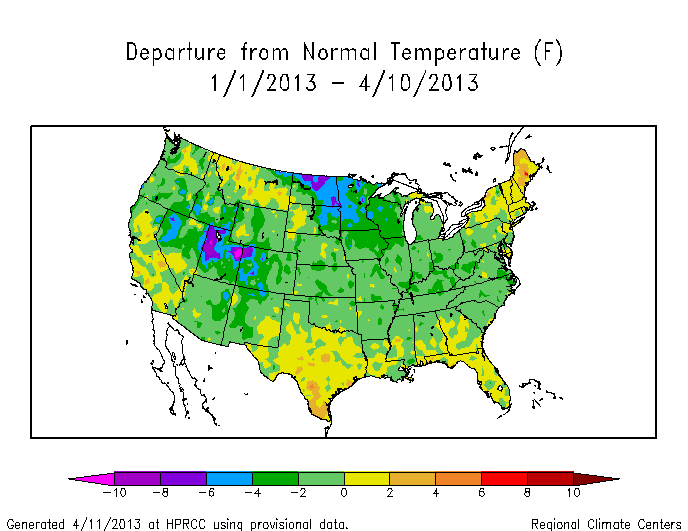
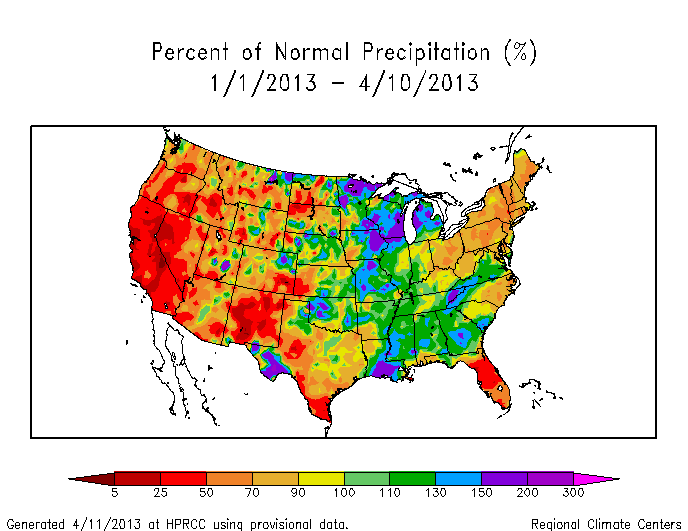
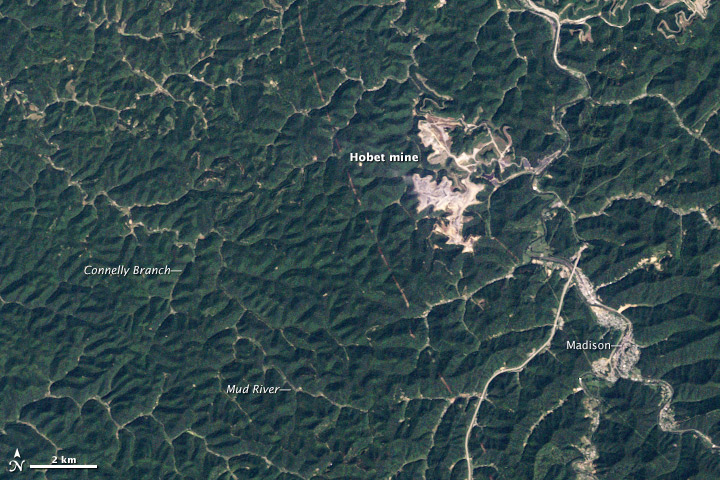 with another image of the same region in 2012
with another image of the same region in 2012 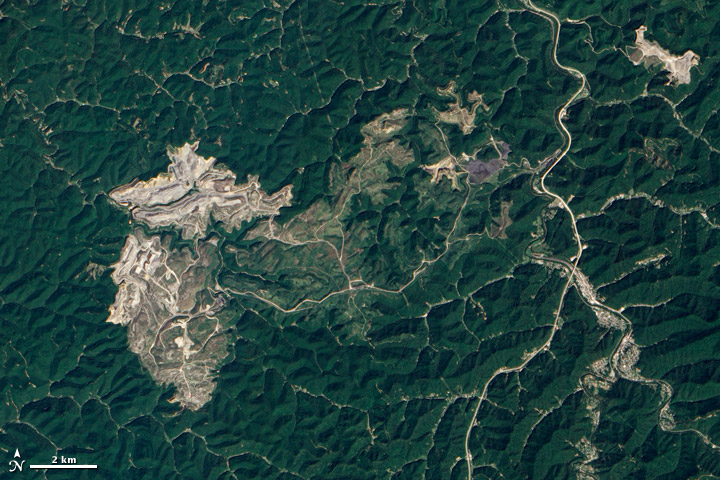 What do scientists do with this kind of imagery? Well, here is a the link to an amazingly clear image-animation of the
What do scientists do with this kind of imagery? Well, here is a the link to an amazingly clear image-animation of the 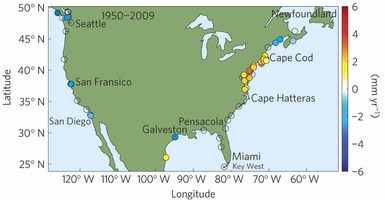 , which shows clearly that the West Coast and East Coast of the USA have already experienced much different responses to SLR. The data seems to be in line with the models, where a model projection is what is shown in the
, which shows clearly that the West Coast and East Coast of the USA have already experienced much different responses to SLR. The data seems to be in line with the models, where a model projection is what is shown in the 